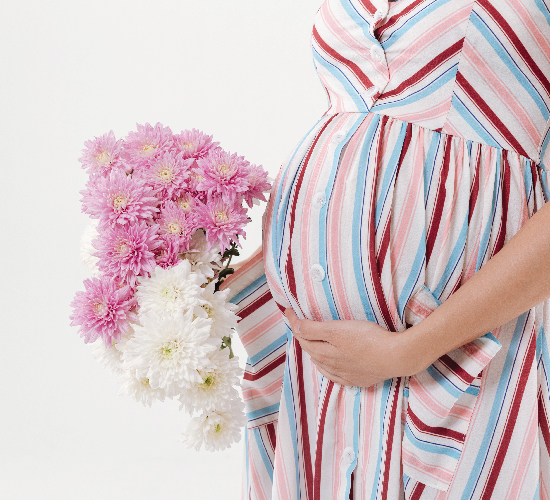Next Steps After A Diagnosis Of Preeclampsia

A diagnosis of any clinical condition during pregnancy may be scary for an expectant mother. Preeclampsia is no exception and it can come as quite a shock if you are diagnosed with preeclampsia or with a risk of preeclampsia. Yes, there’s now a simple test that could predict the risk of preeclampsia fairly accurately even before the condition develops. Keep in mind that effective screening for early onset preeclampsia can be provided in the first trimester, but there are also diagnostic tools to detect and predict preeclampsia development later in the course of pregnancy, such as during the second or third trimesters. Before you panic about a diagnosis or prediction of preeclampsia, here’s what you need to know.
Why Screening And Early Diagnosis Of Preeclampsia Are So Important
Preeclampsia is defined as a serious and potentially fatal pregnancy condition, characterized by hypertension, swelling, and inflammation in the body. It also includes proteinuria or the presence of proteins in the urine in many cases. According to the National Health Portal of India, preeclampsia affects up to 1 in 10 pregnant women in India (1).
Besides high blood pressure and elevated urinary protein levels, preeclampsia may also lead to other complications if not diagnosed and treated swiftly (2). Some of these include:
- Low birth weight of the infant
- Separation of the placenta from the uterus
- Liver problems
- Preterm birth
- Kidney failure
- Seizures
- Stroke
In rare cases, it may also result in loss of a pregnancy or maternal death.
The risk factors of pe can be identified in the first trimester of pregnancy through screening tests and appropriate treatment can be given which can largely prevent the occurrence of preeclampsia. Therefore, if you haven’t already been tested, it’s important that you discuss the screening options with your doctor.
Because of the high risk of complications associated with pe, early identification of preeclampsia is so important. But, what comes next after a preeclampsia diagnosis?
Treatment For Preeclampsia
The only cure for preeclampsia is delivery, but that is not always an option unless you are close to your due date. Instead, your doctor will advise you on the need for more frequent prenatal visits and you will also need to undergo certain blood tests, non-stress tests, and ultrasounds throughout the pregnancy at a higher frequency than normal. If necessary, doctors may also prescribe certain medications or procedures to treat the problem. These include the following.
Medication
Treatment with medication includes the use of antihypertensive drugs to lower blood pressure (3). You need to discuss the risks and benefits carefully with your doctor.
In case of severe preeclampsia or complications like HELLP syndrome (which affects the liver), doctors may prescribe corticosteroids to help with fetal lung development, making it possible to better prepare a baby for premature delivery.
In case of severe preeclampsia, anticonvulsants like magnesium sulfate may also be administered to prevent seizures (5).
Hospitalization
When cases of preeclampsia are severe, doctors may advise hospitalization, so that your condition and the health of your baby can be monitored more closely. This would involve periodic nonstress tests or biophysical profiles, including tests to measure amniotic fluid volume as the lack of amniotic fluid is indicative of reduced blood flow to the fetus.
Induced Delivery
In cases where preeclampsia is diagnosed late in the pregnancy close to the delivery date, the best option may be to induce labor immediately. This is determined by various factors including dilation of the cervix and so on. In severe cases, it may not be feasible to even wait until you are closer to the due date and to consider your baby’s gestational age. In these cases, doctors may induce labor if possible or will have to perform a C-section (6).
Life After A Preeclampsia Diagnosis
Once diagnosed with preeclampsia, personal and medical care does not end with delivery. Make it a point to inform your doctors about your condition and go for regular screenings to check blood pressure, cholesterol, and blood sugar levels. This will help protect against the risk of health complications that may develop as a result of preeclampsia. You can also take steps to protect your health by adopting healthy habits and lifestyle changes that would lower the risk of heart disease. This may include healthy eating, exercising, managing stress, and avoiding smoking.
For more personalized recommendations, you should consult your doctor, dietitian, and other specialists who have been involved in your treatment.
References:
-
- https://www.nhp.gov.in/disease/gynaecology-and-obstetrics/preeclampsia
- https://medlineplus.gov/genetics/condition/preeclampsia/
- https://www.ncbi.nlm.nih.gov/pmc/articles/PMC5987086/
- https://www.ncbi.nlm.nih.gov/pmc/articles/PMC4672720/
- https://pubmed.ncbi.nlm.nih.gov/2288560/
- https://pubmed.ncbi.nlm.nih.gov/12521452/